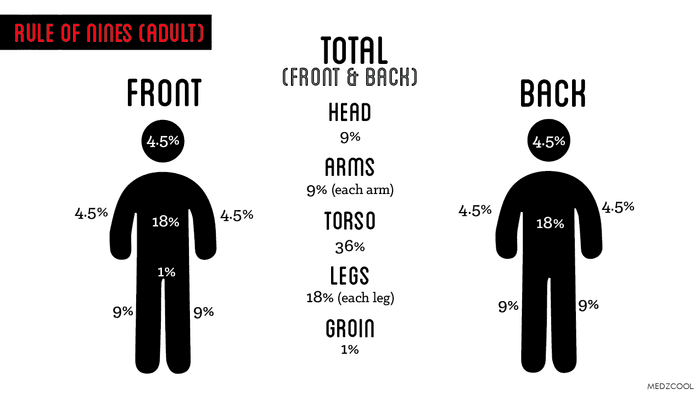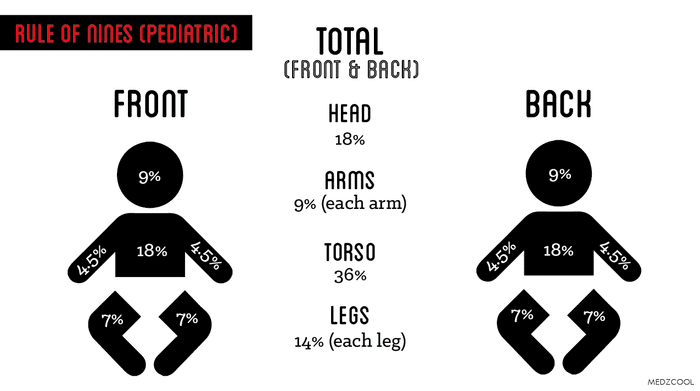NUCLEOTYPE
The Rule of Nines
January 04, 2020
The rule of nines can be used to estimate the total body surface area (TBSA) burned in adult and pediatric patients by using multiples of 9 to estimate surface area for different areas of the body. It also used to help guide clinical decisions regarding fluid resuscitation and can help determine what level of care a patient will need after initial stabilization (e.g. floor vs. ICU).
When calculating the TBSA burned, it is important to remember that the rule of nines is only applied burns that are partial-thickness (2nd degree) and full-thickness (3rd degree) burns.
Adult
Adults have different proportions in their rule of nine calculation compared to pediatric patients. This difference is mainly due to the larger head size in the pediatric population.
Alternatively, you can estimate a patient’s small burns by using the patient’s palm size which will be equal to approximately 1% TBSA.
For example, if a patient has a burn on their arm which approximates to the surface area of 3 of their palm sizes, then they have approximately a 3% TBSA burn to their arm.
Pediatric
In the pediatric population, more percentage is allocated to the head, which is subtracted from the legs, compared to an adult rule of nines.
For pediatric patients greater than 1 year old, you will add 0.5% to each leg and subtract 1% from the head for each year above 1 year old. You continue this shift in proportions until the adult proportions for the rule of nines are reached.

